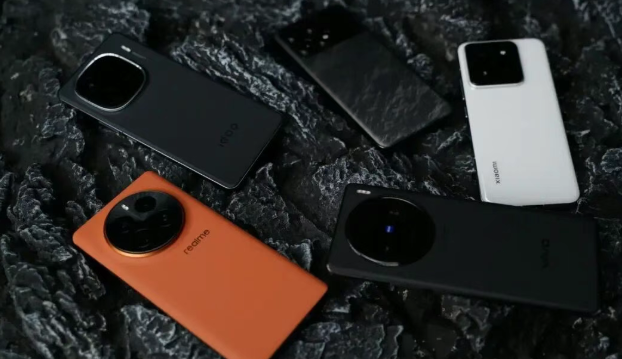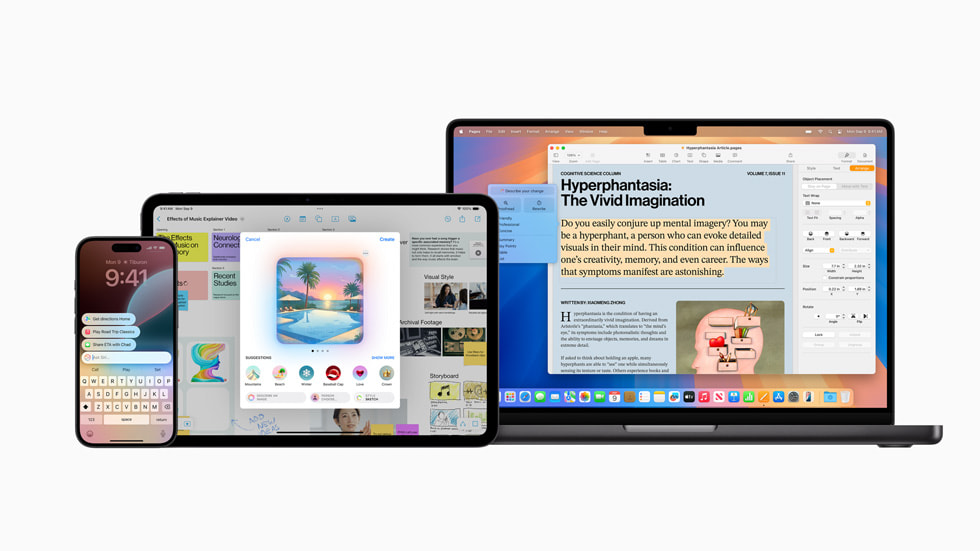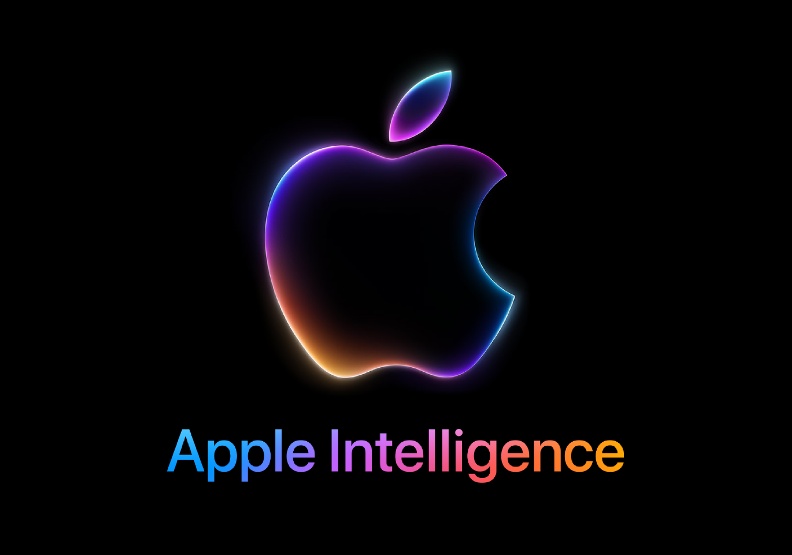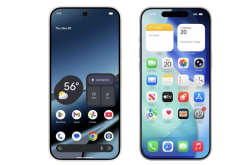Google to Directly 'Bridge the Gap' with Apple? AirDrop Compatibility with Android for the First Time
![]() 11/24 2025
11/24 2025
![]() 523
523
Interconnectivity: The Path Forward
At long last, Google is poised to 'bridge the gap' with Apple.
If you're a regular reader of Leitech, you've likely come across several similar articles before. After all, brands such as OPPO, Xiaomi, and Vivo have already made comparable announcements ahead of Google, even using them as key selling points at one time.
However, if you think this is merely another instance of third-party compatibility, you're mistaken. Google's integration into the Android system represents true 'compatibility,' not a 'forced fit' through third-party software. Some may question, 'Isn't there a difference? Aren't they both forms of compatibility?' The answer is yes, and the distinction is significant.
Is Apple on the Verge of Being Directly 'Bridged' by Google?
To be frank, while rumors had circulated about Google attempting to break through Apple's AirDrop and other features on the Android platform, they remained just that—rumors. Moreover, as the 'other major player' in mobile operating systems, Google's move to harmonize Android and Apple gives the impression that Google is 'compromising its own stance.'

Image Source: Twitter
Yet, when Google explicitly stated in yesterday's system update announcement that 'the Pixel 10, Pixel 10 Pro, Pixel 10 Pro XL, and Pixel 10 Fold now boast 'Quick Share',' I knew it was a game-changer. The description of this feature is straightforward: these models can directly detect nearby Apple devices with AirDrop enabled, whether it's an iPhone, iPad, or MacBook.
Once an AirDrop device is detected, a simple Bluetooth pairing is all that's required to swiftly transfer photos, videos, and documents over a Wi-Fi network, just like Apple devices do. The transfer speed is reportedly nearly identical to that between Apple devices.
Furthermore, this interconnectivity doesn't necessitate downloading third-party apps, offering an experience closer to that of native AirDrop, far more convenient than the interconnectivity solutions devised by domestic manufacturers. Whether it's Xiaomi, OPPO, or Vivo, they all essentially rely on 'self-developed cross-platform transfer software' for cross-ecosystem transfers, rather than true 'compatibility' with AirDrop.
Phone enthusiasts have probably used Local Transmission or SHAREit for file transfers. MiOV's 'AirDrop' is no different from these apps; it merely adapts them to the system level, integrating them with the system's built-in transfer functions. Then, by downloading software that supports private protocols on the Apple side, file transfers can be facilitated through these intermediaries.
This is why, after one manufacturer proposed the concept of transfer compatibility, others could quickly follow suit. Software-level compatibility doesn't require cracking Apple's algorithms or software; it just necessitates the transfer software being available on the App Store.

Image Source: App Store
Of course, subsequent adaptations, such as those for AirPods and Live Photo, required significant effort. However, these adaptations primarily focused on file format compatibility without delving too deeply into algorithm cracking. The closest function to Google's AirDrop breakthrough is actually AirPods adaptation, which resolved issues like AAC decoding and Bluetooth stability, largely ensuring a seamless AirPods experience with Android phones.
In contrast, Google's 'compatibility' has been slow to materialize because they chose the most challenging path: cracking AirDrop and achieving reverse compatibility, essentially tricking Apple devices into thinking they're communicating with 'their own kind,' thereby granting AirDrop transfer permissions.
Due to the inability to resolve Apple ID authentication, Google's cracked AirDrop can only discover and connect to Apple devices in the 'Open to Everyone for 10 Minutes' mode. Nevertheless, it's still more convenient than other third-party software adaptations.
This can be seen as the closest the Android ecosystem has ever come to the Apple ecosystem.
Has Apple's Closed Ecosystem Been Penetrated Overnight?
However, this feature is currently only compatible with the latest models in Google's Pixel series. Adaptations for other models will have to wait for future updates. From Google's description, it's clear that this feature's breakthrough doesn't rely on a new generation of chips or special hardware; it just requires cracking the algorithm and matching the hardware's handshake protocol.
If Apple could tolerate MiOV's previous 'software-level compatibility,' it's uncertain whether they can overlook Google's 'system-level compatibility.' Google has the capability to promote feature adoption across the entire Android ecosystem. Once Google embeds the AirDrop cracking ability into the Android system, it means all other Android phones will possess the same capability, far surpassing the user base of the modest Pixel.

Image Source: Leitech
Google's move truly challenges Apple's ecosystem advantage. For users, this is the first time they can directly send photos, videos, and other content from Android to a nearby iPhone without relying on third-party apps or logging into cloud services. The transfer speed, latency, and stability are also significantly better than past 'usable but unstable' methods.
More importantly, this is the first time Android has officially aligned with Apple at the ecosystem level, eliminating the need for Android manufacturers to build their own transfer alliances. This also means that the interconnectivity ecosystems of domestic brands like Xiaomi, OPPO, and Vivo now have a unified foundation (though, considering ecosystem maintenance and other issues, the true barrier to interconnectivity doesn't lie in algorithms and systems).
One could argue that Google is genuinely attempting to link Android with other ecosystems using a unified underlying standard. This standard isn't limited to Apple; it can also be applied to other operating systems, like Windows and HarmonyOS.
However, at this juncture, many might wonder: Will Apple retaliate? After all, Apple's core principle in its ecosystem strategy is to keep the best experience within its own devices, encouraging users to stay within the iPhone ecosystem due to the 'ecosystem synergy experience.'

Image Source: Apple
Features like AirDrop, Handoff, and iMessage are essentially the cornerstones of Apple's closed strategy. If Apple views Google's approach as 'destructive to the closed ecosystem,' it may employ protocol-level restrictions, device verification mechanisms, and transfer permission checks to block it, ensuring that the iOS and Mac ecosystems remain the best 'closed loops.'
Similar situations have occurred in the past; Apple has repeatedly restricted third-party interconnectivity solutions. Therefore, it's hard to predict how far Google can push this feature. Perhaps Apple has a different idea now.
Interconnectivity: The Future Awaits; Will MiOV Also Join In?
Regardless of whether Apple restricts it, Leitech believes that ecosystem interconnectivity is destined to become a trend in smart device development. Over the past decade, the industry has proven that most users aren't interested in delving into various protocols and formats. They prefer seamless interconnectivity between their phones, tablets, computers, and headphones, without being tied to a single brand for a better experience.
Moreover, similar needs are even more pronounced in the AI era. In many AI ecosystem promotions, cross-device synergy is touted as a crucial aspect of experience enhancement. If Google can use this as an opportunity to connect different ecosystems, it will undoubtedly significantly improve users' AI experiences.
For example, after transferring photos from an Android flagship to an iPhone, the iPhone could automatically generate a memory video. Alternatively, content could be remotely projected to a Windows or MacBook for editing. Or, recordings could be opened on Android but automatically transcribed and summarized by AI on a Mac, fully leveraging the strengths of each AI ecosystem.

Image Source: Apple
If this vision comes to fruition, mobile users will enjoy truly seamless device interconnectivity, greatly enhancing their experience and making Android the new core of the entire mobile ecosystem. Therefore, some netizens believe that Google's cross-platform breakthrough is, in a sense, pushing the entire industry toward 'device equality,' which is more valuable than simply achieving a transfer function.
The same applies to Android. If MiOV's interconnectivity ecosystems can be 'passively' connected, will it pressure brands to introduce more competitive peripheral devices? After all, with guaranteed basic experiences, more cost-effective configurations and smoother UIs become key to market success.
Regardless, when the Android system first touches the core capabilities of the Apple ecosystem in its 'native form,' the barrier between the two systems has finally begun to show signs of loosening. For consumers, this means no longer needing to pay extra for a closed ecosystem and gaining access to many additional supports and experiences.
However, for Apple, this signifies the first system-level crack in its ecological isolation wall, with signs of further widening. Whether Apple will seal it again depends on the game between Google and Apple. At least for now, Apple seems to be taking no action. Perhaps an era of mobile ecosystem fusion is truly upon us.
Apple, Google, AirDrop, Xiaomi, Android
Source: Leitech
Image Credits: 123RF Licensed Image Library








